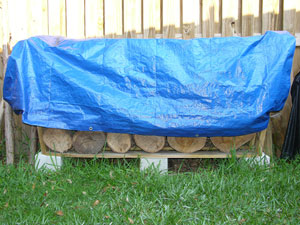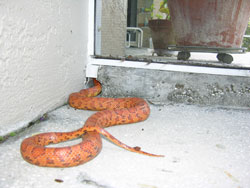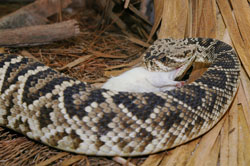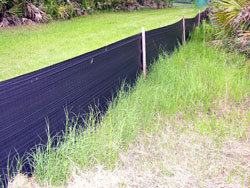Dealing With Snakes - Preventing Negative Encounters
Natural areas that provide homes for snakes and other wildlife are
disappearing and becoming more divided by development, forcing snakes
to eke out a living in the remaining fragments of habitat -- which are
often yards and gardens in residential areas. As a result, people and
snakes are often forced to live in the same areas. However, the
chances of encountering a snake in a residential area are not great,
(many snakes simply don't do well around people), and the vast
majority of snakes you might find around your home are harmless.
Here are a few key strategies you can use to prevent
negative (or unwanted) encounters with snakes --
GO BACK to
"Dealing with Snakes"
"Snake Proof" Your Yard
Do you have tall grass, overgrown shrubs or piles of brush, debris,
or wood? If so, these may provide hiding spots for snakes, and tall
grass can make it difficult to watch your step. Be alert when playing
or working in your yard to avoid being surprised if you suddenly see a
snake. Remember, snakes are most active in spring and summer.

Keep grass mowed in high use areas where children and pets play, and keep shrubs and tree branches trimmed away from the house. Installing chain-link or privacy fence is an effective way to keep pets and children away from wetland and lake edges.
Brush or wood piles can provide habitat for wildlife. Don't remove them, but keep them well away from buildings and areas where children play. Store firewood neatly on a rack -- NOT on the ground.
"Snake Proof" Your Home, Garage, and Sheds
Are there gaps under your doors, holes in your walls, or openings
on your roof that might allow snakes to easily enter your home? Are
there any holes or gaps in the screens on your windows, doors, or
porch, or open drain pipes from enclosed pools? Snakes may enter in
search of rodent prey or a cool hiding spot. Inspect your home,
keeping in mind that some snakes (especially small ones) can enter
through an opening no larger than a pencil.

Seal gaps under doors with door sweeps and garage door threshold weather strips, and use caulking or expansion foam sealant to seal cracks or gaps in walls (where wiring or plumbing enters) or the foundation. Hardware cloth can be used to cover vent stacks, pool drain pipes, or other large access points.
Pet doors are commonly overlooked access points for snakes, and must be sealed or removed to prevent snakes from being able to enter. Outdoor and indoor/outdoor cats capture and kill millions of frogs, lizards, snakes, and birds in Florida each year, and are often responsible for bringing snakes into homes - usually through pet doors!
"Rodent Proofing"
Rodents attract snakes, plain and simple.
 Keep garages
and sheds closed (and seal all holes), and
keep these areas neat and clutter-free.
If you see rodents or signs of rodent activity, use traps or
hire an exterminator to remove them, but avoid using poisons --they
can harm wildlife and pets. Inside the home, keep basements and attics clutter free, seal
holes, and monitor for rodent activity. Keep all food (even pet food) in tightly closed containers.
Keep garages
and sheds closed (and seal all holes), and
keep these areas neat and clutter-free.
If you see rodents or signs of rodent activity, use traps or
hire an exterminator to remove them, but avoid using poisons --they
can harm wildlife and pets. Inside the home, keep basements and attics clutter free, seal
holes, and monitor for rodent activity. Keep all food (even pet food) in tightly closed containers.
Other Prevention Measures
If you frequently encounter venomous snakes and find that the measures above don't deter them, you may consider using fencing in some areas (i.e., along edges of wooded areas or margins of lakes and wetlands) to prevent snakes from entering your yard. However, this method of excluding snakes from an entire yard can be costly and time consuming, and should be used as a last resort. For more information about this technique (and the others listed above), see the resources below.
For more information, see the following resources:
Available to download and print -
Dealing with Snakes in Florida's Residential Areas -- Preventing Encounters
Preventing Encounters Between Children and Snakes
Available to purchase -
Venomous Snakes of the Southeast Poster
Venomous Snakes of the Southeast CD/DVD set
Also see -
How to Get Along with Snakes - Florida Museum of Natural History
Registered Nuisance Wildlife Trappers
Florida Snake Removal
Back to Dealing with Snakes